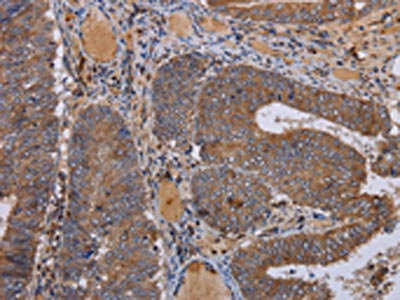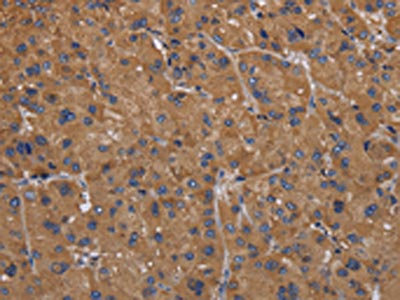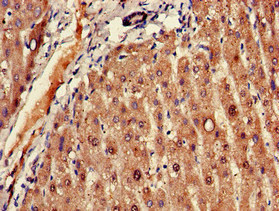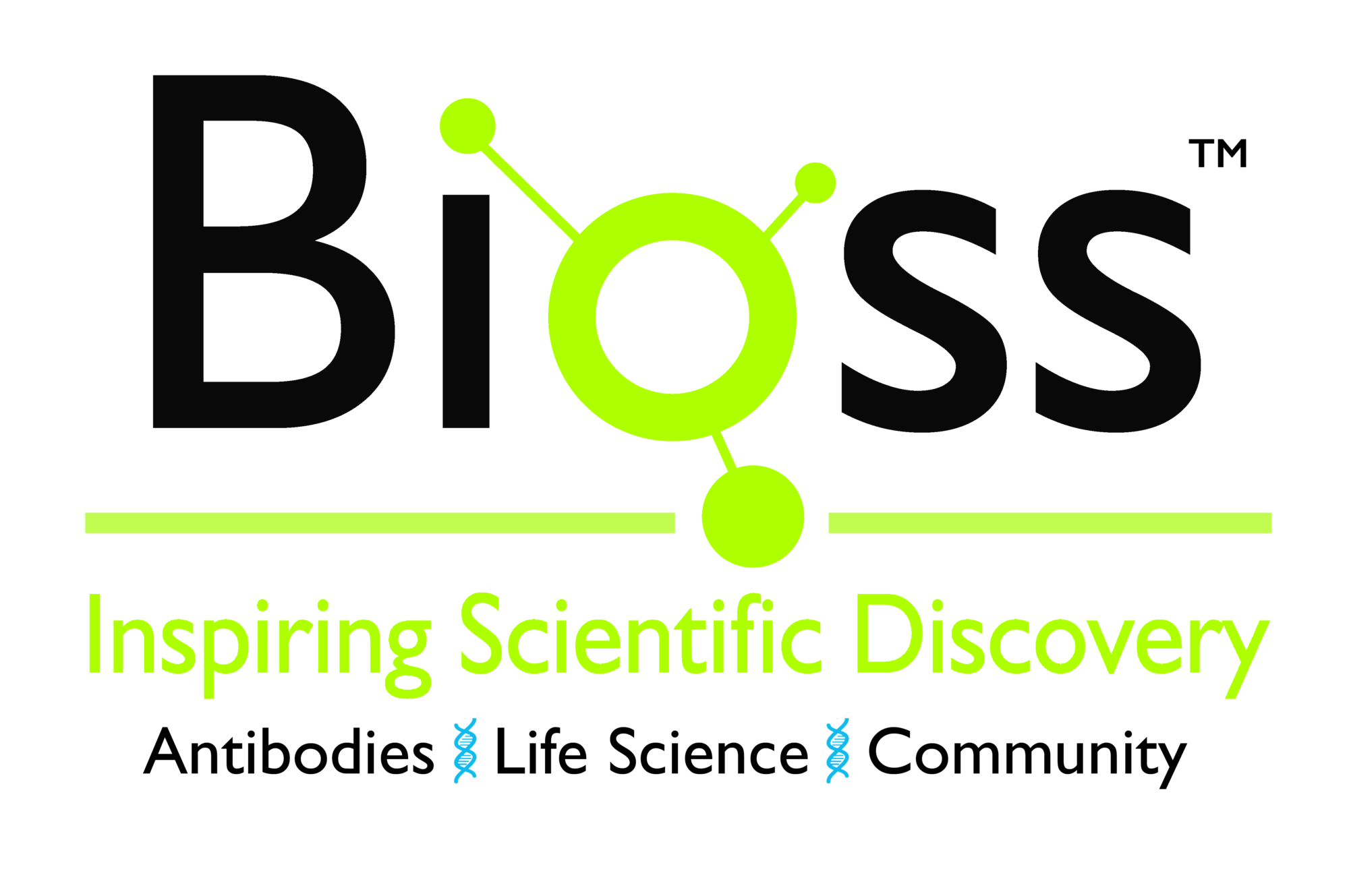
The image on the left is immunohistochemistry of paraffin-embedded Human colon cancer tissue using CSB-PA978301(FADS1 Antibody) at dilution 1/50, on the right is treated with fusion protein. (Original magnification: x200)
FADS1 Antibody
CSB-PA978301
ApplicationsWestern Blot, ELISA, ImmunoHistoChemistry
Product group Antibodies
ReactivityHuman, Mouse, Rat
TargetFADS1
Overview
- SupplierCusabio
- Product NameFADS1 Antibody
- Delivery Days Customer20
- ApplicationsWestern Blot, ELISA, ImmunoHistoChemistry
- CertificationResearch Use Only
- ClonalityPolyclonal
- ConjugateUnconjugated
- Gene ID3992
- Target nameFADS1
- Target descriptionfatty acid desaturase 1
- Target synonymsD5D, FADS6, FADSD5, LLCDL1, TU12, acyl-CoA (8-3)-desaturase, delta(5) desaturase, delta-5 fatty acid desaturase, linoleoyl-CoA desaturase (delta-6-desaturase)-like 1
- HostRabbit
- IsotypeIgG
- Protein IDO60427
- Protein NameFatty acid desaturase 1
- Scientific DescriptionThe protein encoded by this gene is a member of the fatty acid desaturase (FADS) gene family. Desaturase enzymes regulate unsaturation of fatty acids through the introduction of double bonds between defined carbons of the fatty acyl chain. FADS family members are considered fusion products composed of an N-terminal cytochrome b5-like domain and a C-terminal multiple membrane-spanning desaturase portion, both of which are characterized by conserved histidine motifs. This gene is clustered with family members FADS1 and FADS2 at 11q12-q13.1; this cluster is thought to have arisen evolutionarily from gene duplication based on its similar exon/intron organization.
- ReactivityHuman, Mouse, Rat
- Storage Instruction-20°C or -80°C
- UNSPSC41116161






